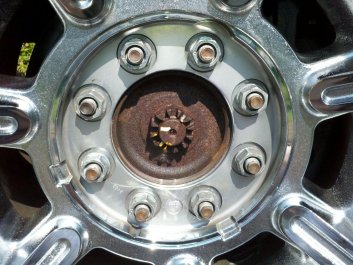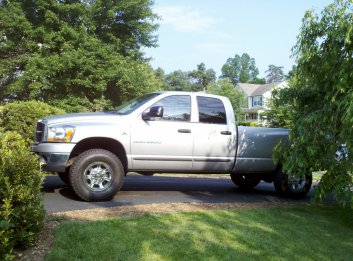2006 Dodge 2500 CTD
with G56
6 speed manual transmission
|
| 6.29:1 first gear
ratio |
| 3.48:1 second gear
ratio |
| 2.1:1 third gear ratio |
| 1.38:1 fourth gear
ratio |
| 1:1 fifth gear ratio |
| 0.79:1 sixth gear
ratio |
| 5.74:1 reverse gear
ratio |
| 3.73:1 axle ratio |
| Equation for engine
rpm = vehicle speed |
| Eng RPM / gear
ratio / final drive X (Pi X diameter in inches) X 60 minutes / inches
in foot (12)
/ feet in mile (5280) = vehicle speed in MPH |
|
Tire Choices:
|
| Goodyear Rugged Trail
(stock)/E 31.5 diameter (98.96 circumference) |
| 2000 / 0.79 / 3.73 X
(98.96) X 60 / 12 / 5280 = 63.6 mph |
|
| Goodrich TA - KO LT315/70R17/D 34.6
diameter (105.4 inch circumference) |
| 2000 / 0.79 / 3.73 X
(105.4) X 60 / 12 / 5280 = 67.74 mph |
|
| Goodrich TA - KO 37x12.50R17/D 36.3
diameter (114.04 circumference) |
| 2000 / 0.79 / 3.73 X
(114.04) X 60 / 12 / 5280 = 73.29 mph |





